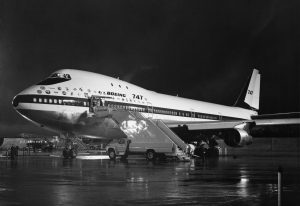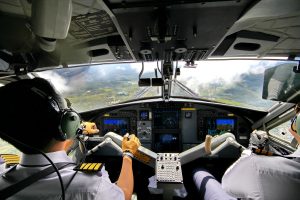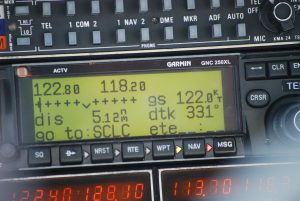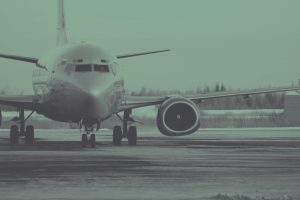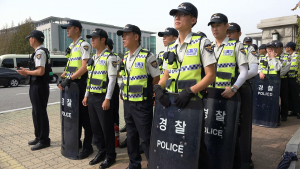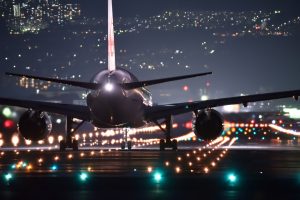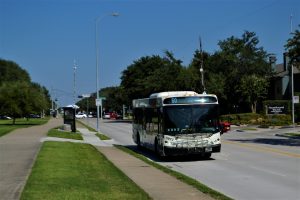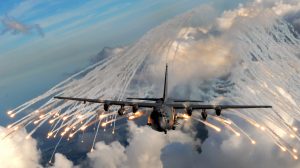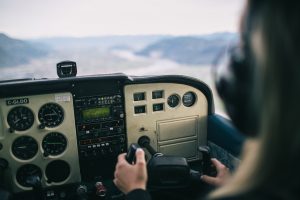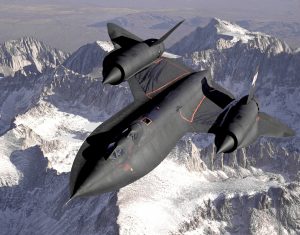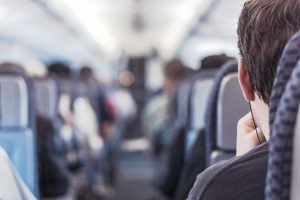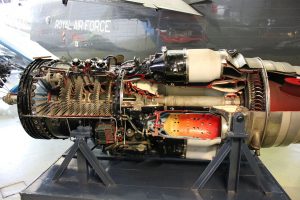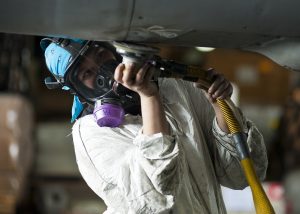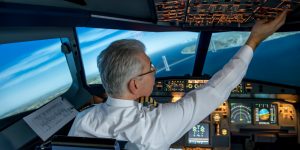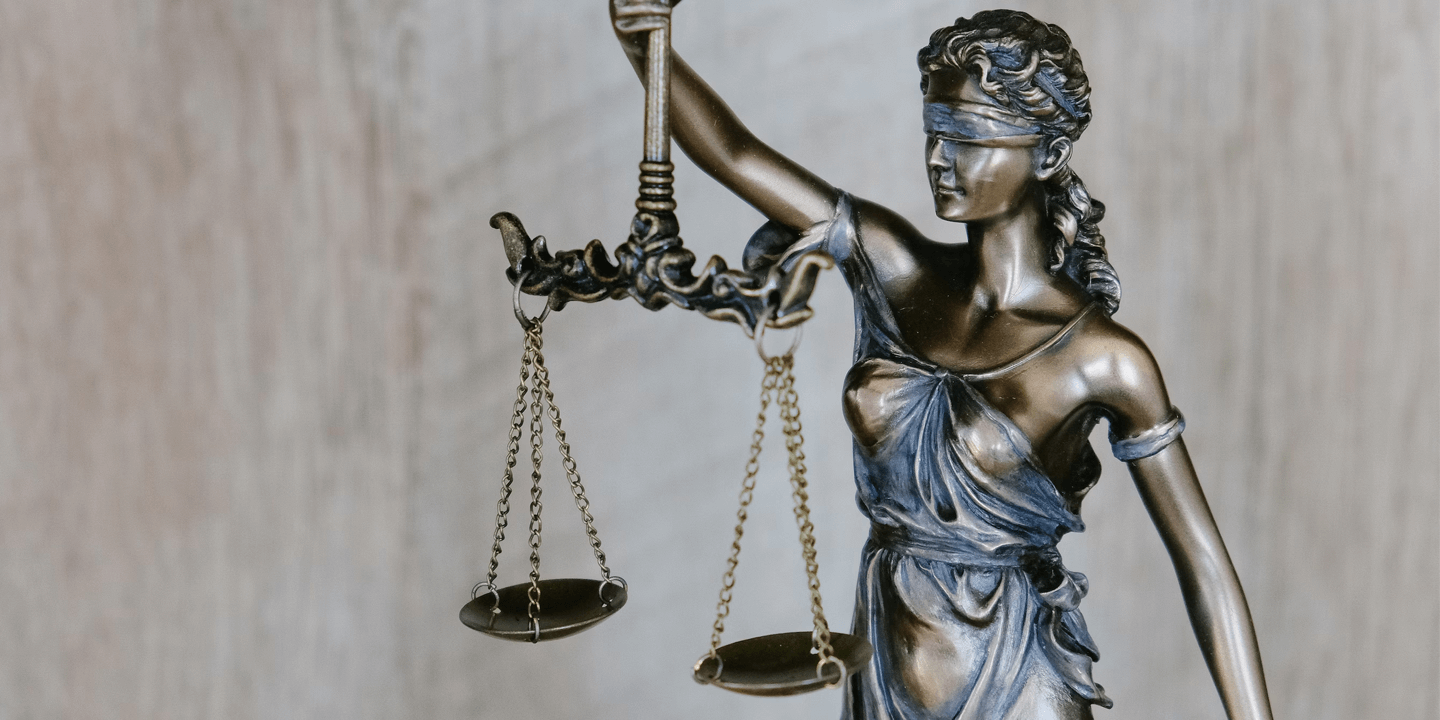Airline travel is so commonplace these days that you would imagine most everyone knows all about it.
Turns out that's just not true, there are all kinds of secret things that go on behind the scenes of airline travel that only the crew are ever aware of.
Until now, that is. We had pilots, air traffic controllers, and flight attendants from around the world spoil the magic of air travel so on your next flight you too, can be in on the little jokes and behind the scenes goodies.
30. There are only two types of pilots: Those who have made a radio call on the wrong frequency, and liars
There's a special frequency called Guard that all aircraft are supposed to monitor. It's for emergencies, or for when an aircraft ends up on a wrong frequency and the controllers need to get contact with them to change them to the right frequency.
It's full of pilots meowing at each other, and people accidentally asking for gate assignments and making other radio calls.
29. This is just good advice for any bathroom
Sometimes the passengers may be having a nice quiet flight in the back while the pilots are upfront dodging thunderstorms and yelling their heads off.
We will not only transport dead bodies but also live transplants, like hearts and lungs. I particularly like the live transplants because we get to cut to the front of the line for takeoff and we get all the short cuts to our destination.
Tip for those who get motion sickness: try not to move your head around. Pilots move their eyes instead of their heads to look at the instruments in the flight deck. Also, try to sit in a seat over the wing. This area of the plane doesn't rotate as much during climbs and descents.
Flight attendants can't do the pilot's job, but pilots can't do flight attendant's jobs for sure. We aren't hired for our people skills.
Don't take off your shoes to go to the bathroom. People pee on the floor all the time.
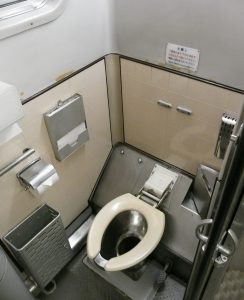 Wikimedia
Wikimedia
28. It seems like pilots should be on salary
We only get paid when the doors are closed and the push back has commenced. If we’re delayed or sitting with the door open, we’re just as annoyed as you are.
At altitude, we’re constantly in contact with air traffic control and change to different “center frequencies” (or control for other than US locations)
We’re also doing fuel checks to make sure the fuel burn isn’t abnormal, dodging weather, and probably complaining about scheduling.
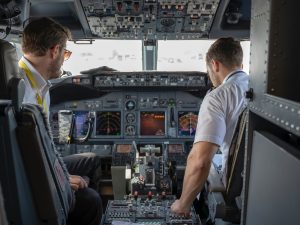 Photo by Rafael Cosquiere from Pexels
Photo by Rafael Cosquiere from Pexels
27. This is how you die
An instructor told me that he and his training buddy BOTH fell asleep for about 45 minutes at the same time while gaining hours for licensing. The plane was in complete autopilot mode, clear skies, zero turbulence. They both swore if they ever flew again they would “handoff” sleep like handing off the controls
He told me that after both of them awoke, they were terrified. Neither had no idea what had happened, even if anything had happened. Luckily, it was over the Gulf of Mexico and at a low enough altitude where it wouldn't impact commercial airliners. Their trim was set before "the nap", so they only gained a couple of hundred feet of altitude. But rest assured, each was not happy with themselves. They immediately contacted ATC, verified their position, and turned around to go back to the airport, while palming the yoke the entire way. Oh and this was at night too (they needed the night experience).
They were in a Cessna 152. This wasn’t an oxygen issue. It was just two buddies not communicating with each other and both assuming the other was flying
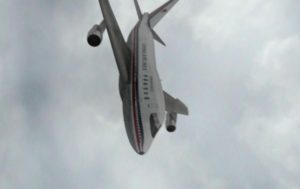 Pixabay
Pixabay
26. How is this actually legal
Flight attendants don't get paid on the ground. Only flying hours are paid. We are slave labor on the ground and duties are continually added to our unpaid work time because the company knows they don't have to pay us. We show up 2 to 3 hours before we even start getting paid and some days we will work up to 14 hrs and only get paid for 5 or 6 of those hours. It should be illegal.
Please be kind when you are boarding the plane and getting all pissy about your bags etc, the flight attendant is a volunteer while she is helping you on the ground, she is essentially doing you a favor.
 Pixabay
Pixabay
25. Shady stuff
Most of the time the passengers are not given the full answer on why a flight is delayed or canceled. Airlines will typically blame cancellations on unrelated events (weather) instead of mechanical issues so they don’t have to pay for hotel rooms/meals etc.
Also, chemtrails are not real. For those of you who believe they are real, give your head a shake.
 Pixabay
Pixabay
24. More Guard shenanigans
There is a radio frequency we all are required to monitor. Its called Guard. It’s for emergency use and is designed for maydays, and for Air Traffic Control to reach aircraft that may have lost radio contact, or to relay messages from aircraft to other aircraft, etc. every day this frequency is abused. You will hear hundreds of professional aviators meowing, yelling obscenities at each other, and making fun of one airline or another. Often times what will start it is some poor guy accidentally transmitting his PA announcement to passengers on the guard frequency, followed by the very “mature” outbreaks for about 5-10 minutes.
It’s the worst on the east coast.
Just today I heard an airline aircraft trying to relay info about a medical emergency on this frequency through one of their fellow company aircraft. They couldn’t finish any of their sentences without people yelling “YER ON GUUUARD!” “HEY NOBODY CARES ABOUT YER PASSENGER!” “HEY YOU’RE ON GUARD TOO EH!”
23. Any landing you can walk away from is a good landing, any landing you can walk away from and reuse the aircraft is an excellent landing
One split second of instinct combined with piloting skill decides if you land on the runway or on the side of it. Most of the runways are 45 meters wide and on a gusty summer afternoon or during thunderstorms I take God's name more than the pope himself.
A smooth landing is not necessarily a good landing. One can make a smooth landing and it will feel good for passengers but it could be a risky landing if the pilot decides to use the extra runway. Never shout at your pilot for a bad landing unless he crash lands. And if he crash lands and you can shout at him, understand that you are alive because of him.
Many a times aircrafts coming in to land go back up in the air. This is a scary experience for many as engines, after being relatively quiet for a while, roar back to life and aircraft is pulled back up. This is called a go-around. This happens because either the runway is not clear, the weather is something that can't be negotiated properly for landing or the pilot is not at the right place and right configuration. Go-Around is something that is emphasized by all the senior trainers and authorities as it is better to go back up in the air than to be in a precarious position while forcing into land. So whenever your pilot does a go-around, be happy that he is a safe pilot.
22. So just like any customer service job then?
As an Air Traffic Controller, we are constantly swearing and yelling at pilots when we’re not on the frequency and then when we key up we use our nice guy voices.
 Photo by Moose Photos from Pexels
Photo by Moose Photos from Pexels
21. This is why they pay you the big bucks
I was only a month or two out of IOE (initial operating experience) at my first airline job, flying right seat in a Regional Jet. I had just come back from the bathroom when the captain pointed that several flight instruments on his side had failed, and he had reverted to using data from my side (basically told his main flight display to start using data from the second independent system).
Soon, however, THAT went bad too, the autopilot disconnected, and here we were at 25,000 ft or so, in icing, hand flying off a tiny little combined last-ditch backup instrument called an IESI (integrated electronic standby instrument, if memory serves).
We declared an emergency, asked ATC to point us in the direction of better weather, and tried to figure out what was happening. Icing on BOTH primary pitot tubes maybe, though that shouldn’t happen (they are heated).
In any case, we ended up making a perfectly safe landing after a diversion, and the passengers never had any idea that, for a few minutes, I was really concerned that things were about to turn very, very bad and that we were down to our emergency backup gauge.
That’s the shortened version without most of the techno-babble anyway.
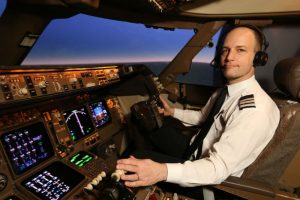 Pixabay
Pixabay
20. I feel sorry for the people sitting around Mr. Stinker
Often we'd have someone on board with terrible body odor. You can set the temperature at one end of the cabin hotter and it localized the smell to one part of the plane. If you see coffee filter bags hanging anywhere its because someone smells like garbage somewhere on the plane.
FAs often talk about the "hot guy in 23B" or whatever seat he's in.
Pilots mess around a lot up front. They'll take pictures, post on FB, watch movies, automation has taken over a lot of the work on long flights.
Also, don't ever walk barefoot or in socks on an airplane. The same mop that mops the lav, mops the galley.
19. Punch it, Chewie
I’ve been a pilot for 6 years. I primarily teach Chinese airline pilots how to fly but I’ve done some passenger operations in business aircraft on the side.
First of all, all the stories about pilots making cat sounds and Chewbacca noises is 100% true. Also, whenever someone leaves an area and switches frequencies, they yell “SEE YUH” and then a dozen other pilots will key up yelling “SEE YA” one after another. We also enjoy making fun of people who say “with you,” “got em on the fish finder,” “any traffic please advise,” and “tree” and “fife.”
Also, the things that scare passengers don’t phase the pilots one bit. We don’t care about turbulence or having to do a go-around. The things I don’t like are things you generally won’t know about - thunderstorm dodging, microburst alerts, ice, maintenance issues, etc.
18. Probably for the best
Flying Paris to Seattle. Normal uneventful flight. I don’t think there was WiFi available on the flight.
When we land, we are greeted by tons of heavily armed national guard, police, TSA, K-9’s... the Paris terror attacks happened about an hour or so into our flight.
Passengers had no idea that the attack had happened until everyone got cell phone reception, and floods of “are you ok?” texts.
The crew knew the whole time.
17. I want to see them accidentally meow in the cabin speakers instead of guard
My dad is a pilot and has told me about this special frequency called Guard.
He says sometimes it'll start with some guy yelling “GUUAARDDDDD????”
Followed by some retired colonel in a serious tone saying “Hey! Get off guard.”
Then there's a long pause, and some guy just says “....meowwwww.”
My dad told me one time he accidentally said his cabin announcement to the guard frequency, and some guy replied “nice one united”
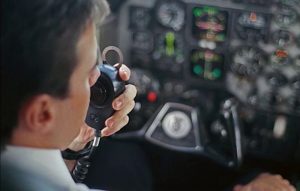 Pixabay
Pixabay
16. I wonder if he ever found out
Landing gear got stuck on decent, we flew in circles for ages just waiting to see find out if we needed to crash land or not. Luckily the gear eventually came down, passengers never knew something was wrong.
One time I accidentally spilled coffee creamer on a bald dude's head while he was sleeping during service. Myself and everyone around him silently agreed to say nothing. He looked as if a bird pooped on his head... I still feel guilty about it.
Never drink the coffee, I have never seen those machines cleaned.
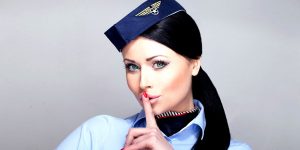 Pixabay
Pixabay
15. Don't mind my friend, he's dead tired
Nobody is ever pronounced dead on a commercial flight. The crew will perform CPR until the body is removed from the plane. Otherwise, the coroner’s office can impound the aircraft for days, until their investigation is complete. If a physician on board declares the patient dead, well, bummer for the airline. More than once I came in to work to find a deceased passenger in the locker room, waiting for the coroner to pick up the body.
Also, dead people are transported as cargo on commercial flights. We refer to them as human remains. If you see a long rectangular cardboard box the size of a coffin being carefully loaded into a cargo bin by several rampers, it’s human remains.
14. That's comforting
Big planes have some fancy systems dedicated to giving pilots info on the movement of planes that are very nearby and providing instructions to avoid collisions, called TCAS. If another plane ever gets close enough to the one you're on to make TCAS yell at the pilots to perform an evasive maneuver, you'll probably never know. TCAS issues a few levels of warnings that start when planes are still quite far apart, allowing pilots to respond to these rare situations with much gentler maneuvers than a layman might expect. No need for high-G stuff that would make the plane harder to control and disturb the passengers, just an innocuous climb or descent.
13. I don't believe you
Spirit Airlines doesn't actually have planes, they put you on a bus and catapult it across the planet. An arguably more ambitious feat than flying a plane.
12. I should have been a pilot
During dull periods of the cruise, the other pilot and I will often share memes with each other. We will also chat up any cute stewardesses and try and get them out for a party once we’ve landed.
I once played a prank on a new flight attendant by telling her we need a sample of cabin air. She went through the aisles with a plastic bag collecting air for me to test. She took the prank well though and got me back by asking me to write something down with a pen that gives you an electric shock. It’s a fun job.
I’m always amazed that passengers think aircraft fly themselves on autopilot. I’d compare the autopilot to your iPad; it has a lot of uses and can do a lot of things by itself once you’ve told it what to do. Your iPad could turn on your home smart bulbs but you’ve got to set up a schedule. Your iPad can send an email, but it won’t write it for you. So whilst it helps a lot and makes things easier, it’s still useless without an operator. Same as an autopilot.
Turbulence, unless you’re working for an American airline where the company is petrified of being sued, most of us don’t do anything about it unless it’s particularly bad. Quite often I’m just sitting there sipping coffee watching it bounce around. I always imagine passengers think we’re wrestling controls.
I fly long haul and spend a considerable amount of time on each flight getting paid to sleep in bunk beds right above passengers heads. Even single decker aircraft will have a small, hidden upstairs area. I find it quite comical that there will be someone sitting in row 3 with no idea a pilot is sleeping above them.
I’ve recently had technical issues 2 hours into a 12-hour flight. All the passengers were absolutely clueless to the fact we were 30seconds away from returning back home until the problem fixed itself.
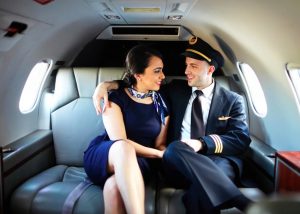 Pixabay
Pixabay
11. I love how people think planes have Star Trek matter replicators on board and they can just make more food
If someone acts like a major jerk mid-flight, we will have security meet you on the ground at the destination.
We have limited resources available, so if you complain about wanting steak but we only have chicken left, there are literally zero things we can do about it. There is only so much space we have to stock all the goodies.
There may be major drama going on between crew members, but we do our best to hide it and give good customer service. I have literally cried behind a wall before because a crew member was being condescending and rude, and walked out into the cabin smiling afterward.
We make fun of people for being rude, being inconsiderate of others, playing videos out loud, clipping toenails, eating salt dried fish and leaving the bones on the floor.....
People will literally ask us about mileage points and why they didn’t get upgrades and why their bags got delayed and how they’re going to miss their connection. If there is a major delay flying into a city, we literally hide in galleys to avoid people asking us questions.
If a passenger is rude to our face, we will crunch up the snack mix or cookie before handing it to them, essentially giving them a bag of crumbs.
10. This sounds like fun
If you fly around Asia you’ll hear the Japanese, Chinese and US militaries challenge each other every few minutes. For example,
Chinese military (very stilted, heavily accented English, feigning urgent concern). “ Aircraft in position XXX.XX North, XXX.XXE, you are in the Chinese Air Defence Identification Zone you must leave immediately!”
Pause.
Japanese military aircraft (well pronounced and professional). “This is Japanese Self Defence Force. We are flying in international airspace in accordance with international law”
This goes on all day. Occasionally you’ll hear the Chinese arc up again with, “American/Japanese helicopter, this is Chinese warship 123, you are inside 3 miles of our ship, to avoid incident you must leave immediately!”
“This is Japanese/US helicopter. We are flying in international airspace in accordance with international law.”
I very regularly see and hear US P8’s (military) well within Chinese airspace, without the required clearance. In Hong Kong, the air traffic controllers have a rapport with them along the lines of,
“Aircraft in position X at FL195, you are in Hong Kong air traffic control zone can you squawk (integration device) code 1200 so we know you hear us........ thank you. Traffic in your area is ....”
The US aircraft never speaks but the safety is enhanced by the exchange.
I’ve seen them many times cruising and snooping well within Chinese airspace just sweeping up data. I’ve also had a very close encounter with a US RC-135 in Russian airspace near the border of North Korea, but that’s another story.
9. Where's Sam Jackson when you need him
My father had a story about in the 1970's a passenger brought a pet snake on board and it got loose in an aircraft during the flight to disappeared somewhere on board the aircraft. I'm pretty sure the airline crews all knew which plane was the "snake" plane but didn't tell any of the passengers when they were operating it.
8. We will never get teleportation technology because it would put bus drivers out of a job
Automation and computers are great, I'm kind of a tech nerd myself and I love to see advancements in technology. I also happen to fly one of the newest aircraft on the commercial market and am involved with safety departments in my company so I see a lot of things going on that most line pilots won't personally see or will only hear rumors of.
That said I think people give the level of technology in the aircraft a lot more credit than it's worth... Mostly regulations have held back a lot of advancement but also what we do is a really complex job. The autopilot and computers are pure 'garbage in garbage out' machines and there is no complex processing I couldn't do with a basic calculator done it just happens to do it a lot faster. So while the autopilot is on about 90% of a 'normal' flight with little weather (the other 10 being takeoff and landing), the performance, weather, route, and load have to be checked and inputted into the computers by the pilot. Even in route often when there is weather or other considerations we have to direct constantly what the autopilot is doing.
So while the autopilot makes our life easier I would say technologically we are at least a decade off from single pilot operations (even with rapid advancements in technology and laws most airlines have just revitalized their fleets over the last 5 years that last at least 10-15 before they start buying brand new types) and much longer than that for pilotless commercial aircraft... Not even taking into consideration the pilot unions and Congress will fight tooth and nail to keep somebody in the flight deck.
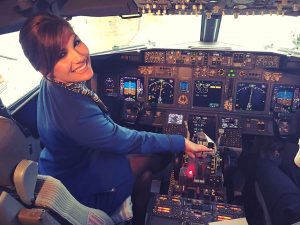 Pixabay
Pixabay
7. I'd much rather have a rested pilot rather than a tired one
From the cockpit, night sectors with minimum crew we often have to take up extra pillows/blankets at the request of pilots so they can sleep. One pilot will stay awake at all times, but still disconcerting when you have to go up and see the Captain snoring contentedly while tucked up in his first-class doona while still in his (reclined) LHS seat.
An occasion when I was a little concerned was a flight (within last 5 years) when I headed up to clear the flight deck at top of drop, only to see large paper maps spread out over the instruments, destination was new to both pilots (both fairly new to aircraft type) and they were just double checking/discussing options. It was actually great CRM, in establishing clear comms and planning, and they were using paper maps instead of iPads just to get a better/clearer picture, but it didn’t reassure me walking into that; when seeing my look, the pilots response was “Don’t stress, we just haven’t been here before.” I cleared the deck and got the heck out of there to let them do their thing, but did mention to my crew to make sure we do our checks especially thoroughly for that landing. Also, pilots are not hired for their people skills and are often not great at communicating with cabin crew, so quite often there will be tension between the flight deck and cabin crew. Also differences between older, usually white (fly in US/Australia), usually men in Flight deck, and predominantly younger cabin crew, largely young women and gay men (from all racial backgrounds due to need for language skills), can lead to “personality clashes” that the passengers will have no idea about. One of the airlines I work for STILL has issues with pilots not wanting gay male cabin crew to touch/prepare their food, and they’ll often request only the female crew to bring up their crew meals, or only offer the jump seat in the flight deck for landing to prettier, younger, female crew. Several flights I have been on had a palpable sense of loathing between cabin crew and pilots. Passengers are completely unaware.
In terms of the cabin, again lots happening that most passengers will never know about. Deaths, medical issues, drunk people getting cut off from drinking and being threatened with arrest on arrival, sexist/racist/homophobic behavior from passengers that is incredibly widespread, most passengers (except those in direct sight of issue) will have no idea. Some of this may be reported to authorities on landing, but for the most part cabin crew just have to put up with it, and will just complain like crazy in the galley. And if you think you’re getting “attitude” from your cabin crew, keep in mind they’ve probably been verbally abused at least once that day, possibly groped multiple times (mainland China is a hated destination for crew because passengers (male and female) will just reach out and poke/grab a body part to get your attention to get a drink/more food) and they’ve definitely been treated like trash by more than one passenger and possibly one of their (pilot) colleagues, so be nice! Say please and thank you! And take off your noise-canceling headphones when you can see we’re speaking with you.
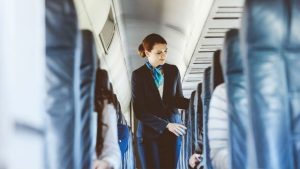 Pixabay
Pixabay
6. Who knew ice was so terrifying
Here's a story about a weather phenomenon I saw only once in 6,000 hours of airline flying. We had a severe icing encounter with [SLD] (supercooled large droplets) that none of our official training covered. The only two people who knew how close we came to an incident/accident were myself and the first officer.
It was a gorgeous spring day in central California as we were climbing through 15,000 ft. near Bakersfield on the way to LAX. We had departed FAT and my FO was hand flying the Emb-120. This was a little unusual but he was partially bored, had been away on vacation, and was feeling out the plane since we had just swapped aircraft. No two planes fly exactly the same, especially due to shifting passenger load, fuel, and baggage. We had flown several months together in the prior year, so I knew he was an extremely competent airman. In this case, we were lucky that the autopilot wasn't on because it would have masked a very dangerous situation.
What we didn't know was that we were flying into an area of severe icing, which turned out to be a freak microclimate. We are 20 minutes into the flight and the FO declares, "Something is wrong. The controls are getting sluggish." I immediately check our airspeed and it's about 30 knots slow, but our pitch and power are normal. The FO started to lower the nose and said, "I don't think we can continue the climb." We were slowing through 160 knots. but should be above 180 knots. If we get near 120 knots. we'd lose control of the aircraft.
The OAT (outside air temp) was -10C, but the sky was totally clear. I lean forward and look at the wiper blades and see a solid half inch of ice coating them and flowing/crusting up above the window trim. None of this was visible from a normal seated position. I throw all the anti-ice switches on and start to bring the props forward. They were in partial cruise power, which is a lower RPM. In Brasilia, it was normal to bring the props back several times during the climb to reduce cabin noise/vibration, save on wear and combat pilot fatigue, all of which do not degrade climb performance--except in icing.
As soon as I touch the condition levers to increase RPM the whole plane started shaking violently. Which meant ice on the props, it's bad. If I try to bring them up I could damage the aircraft (had these two fatal accidents in mind [ASA 2311] and [ASA 529]. I craned my neck to look at the spinner and it was frosted in white powder.
Low RPM, ice, and low airspeed are a dangerous combo. I advise ATC that we are in severe icing, could not continue the climb, and need an immediate descent. On a perfectly calm day, this was a shock to the controller. While he was pondering, we had already started descending to 14,000 ft.--aviate, navigate, communicate. The props then started to shed the ice, which was slapping against the fuselage (it has a reinforced plate bolted to the skin for this reason) but I doubt any of the passengers noticed. One of the benefits of having high time pilots is they get used to every possible noise, smell and sensation that the plane can make, which can be crucial for good judgment. Years earlier, I could have avoided smoke in the cockpit at night over the Everglades, had I trusted my nose prior to takeoff.
Our icing incident might not sound like a big deal until you read this.
Had my FO not been hand flying unlike Eagle 4184, had we missed a full night's sleep, had it been after midnight on our 8th leg of the day, had I not put two and two together quickly--we would have had a roll upset and possibly bent the airframe and/or torn the tail off performing a recovery (remember Alaska 261). The icing happened so fast, and without warning, that it nearly exceeded our perception ability. The SLD accumulation was so rapid, that the ice warning system never detected it. This was also a case where human beats automation. If the autopilot was on, it would have fought asymmetric force until it exceeded its design limitation, then failed, snapped off, and put us upside down in a spiral dive. Lucky for us, the FO was busy flying and I was busy troubleshooting, which is how CRM (crew resource management) should work.
Some people insist that automation can solve for any inflight emergency. Pilots are just switch monkeys, right? In this scenario, full automation could have led to an accident. The Brasilia was a fantastic aircraft. It would have made an amazing medium bomber in WW II, and I truly trusted the design. It was rugged, fast, and well-engineered. However, it had a history of roll upsets. Trivia time: Tip to tip the propeller blades are 18 ft. and produce tremendous gyroscopic force.
A lesson for other pilots: Always bring the props to full RPM prior to encountering icing or if you suspect icing in the area. Not only does it help resist/shed ice sooner, but full power is available when needed. This was not SOP (standard operating procedure) or part of the QRH (quick reference handbook) at the time. In our defense, we had no way of detecting SLD. There were no PIREPs (pilot reports), visible moisture, or other indicators besides OAT. We also had no rationale to run the prop or wing boots prior to encountering ice. The entire event lasted less than 5 minutes, but it only takes a couple of minutes of inattention to endanger helpless passengers. Flying should be slightly stressful, even on clear weather days.
5. The Blackbird is a crazy airplane
There were a lot of things we couldn't do in an SR-71, but we were the fastest guys on the block and loved reminding our fellow aviators of this fact. People often asked us if, because of this fact, it was fun to fly the jet. Fun would not be the first word I would use to describe flying this plane. Intense, maybe. Even cerebral. But there was one day in our Sled experience when we would have to say that it was pure fun to be the fastest guys out there, at least for a moment.
It occurred when Walt and I were flying our final training sortie. We needed 100 hours in the jet to complete our training and attain Mission Ready status. Somewhere over Colorado, we had passed the century mark. We had made the turn in Arizona and the jet was performing flawlessly. My gauges were wired in the front seat and we were starting to feel pretty good about ourselves, not only because we would soon be flying real missions but because we had gained a great deal of confidence in the plane in the past ten months. Ripping across the barren deserts 80,000 feet below us, I could already see the coast of California from the Arizona border. I was, finally, after many humbling months of simulators and study, ahead of the jet.
I was beginning to feel a bit sorry for Walter in the back seat. There he was, with no really good view of the incredible sights before us, tasked with monitoring four different radios. This was good practice for him for when we began flying real missions when a priority transmission from headquarters could be vital. It had been difficult, too, for me to relinquish control of the radios, as during my entire flying career I had controlled my own transmissions. But it was part of the division of duties in this plane and I had adjusted to it. I still insisted on talking on the radio while we were on the ground, however. Walt was so good at many things, but he couldn't match my expertise at sounding smooth on the radios, a skill that had been honed sharply with years in fighter squadrons where the slightest radio miscue was grounds for beheading. He understood that and allowed me that luxury.
Just to get a sense of what Walt had to contend with, I pulled the radio toggle switches and monitored the frequencies along with him. The predominant radio chatter was from Los Angeles Center, far below us, controlling daily traffic in their sector. While they had us on their scope (albeit briefly), we were in uncontrolled airspace and normally would not talk to them unless we needed to descend into their airspace.
We listened as the shaky voice of a lone Cessna pilot asked the Center for a readout of his ground speed. Center replied: "November Charlie 175, I'm showing you at ninety knots on the ground."
Now the thing to understand about Center controllers was that whether they were talking to a rookie pilot in a Cessna, or to Air Force One, they always spoke in the exact same, calm, deep, professional, tone that made one feel important. I referred to it as the " Houston Center voice." I have always felt that after years of seeing documentaries on this country's space program and listening to the calm and distinct voice of the Houston controllers, that all other controllers since then wanted to sound like that, and that they basically did. And it didn't matter what sector of the country we would be flying in, it always seemed like the same guy was talking. Over the years that tone of voice had become somewhat of a comforting sound to pilots everywhere. Conversely, over the years, pilots always wanted to ensure that, when transmitting, they sounded like Chuck Yeager, or at least like John Wayne. Better to die than sound bad on the radios.
Just moments after the Cessna's inquiry, a Twin Beech piped up on frequency, in a rather superior tone, asking for his ground speed. "I have you at one hundred and twenty-five knots of ground speed." Boy, I thought, the Beechcraft really must think he is dazzling his Cessna brethren. Then out of the blue, a navy F-18 pilot out of NAS Lemoore came up on frequency. You knew right away it was a Navy jock because he sounded very cool on the radios. "Center, Dusty 52 ground speed check". Before Center could reply, I'm thinking to myself, hey, Dusty 52 has a ground speed indicator in that million-dollar cockpit, so why is he asking Center for a readout? Then I got it, ol' Dusty here is making sure that every bug smasher from Mount Whitney to the Mojave knows what true speed is. He's the fastest dude in the valley today, and he just wants everyone to know how much fun he is having in his new Hornet. And the reply, always with that same, calm, voice, with more distinct alliteration than emotion: "Dusty 52, Center, we have you at 620 on the ground."
And I thought to myself, is this a ripe situation, or what? As my hand instinctively reached for the mic button, I had to remind myself that Walt was in control of the radios. Still, I thought, it must be done - in mere seconds we'll be out of the sector and the opportunity will be lost. That Hornet must die, and die now. I thought about all of our Sim training and how important it was that we developed well as a crew and knew that to jump in on the radios now would destroy the integrity of all that we had worked toward becoming. I was torn.
Somewhere, 13 miles above Arizona, there was a pilot screaming inside his space helmet. Then, I heard it. The click of the mic button from the back seat. That was the very moment that I knew Walter and I had become a crew. Very professionally, and with no emotion, Walter spoke: "Los Angeles Center, Aspen 20, can you give us a ground speed check?" There was no hesitation, and the replay came as if was an everyday request. "Aspen 20, I show you at one thousand eight hundred and forty-two knots, across the ground."
I think it was the forty-two knots that I liked the best, so accurate and proud was Center to deliver that information without hesitation, and you just knew he was smiling. But the precise point at which I knew that Walt and I were going to be really good friends for a long time was when he keyed the mic once again to say, in his most fighter-pilot-like voice: "Ah, Center, much thanks, we're showing closer to nineteen hundred on the money."
For a moment Walter was a god. And we finally heard a little crack in the armor of the Houston Center voice, when L.A.came back with, "Roger that Aspen, Your equipment is probably more accurate than ours. You boys have a good one."
It all had lasted for just moments, but in that short, memorable sprint across the southwest, the Navy had been flamed, all mortal airplanes on freq were forced to bow before the King of Speed, and more importantly, Walter and I had crossed the threshold of being a crew. A fine day's work. We never heard another transmission on that frequency all the way to the coast.
For just one day, it truly was fun being the fastest guys out there.
4. The more you know
If you ever see a crazy and/or panicked passenger trying to open an emergency exit inflight up at altitude, don't worry...just laugh and enjoy the show.
They won't get it open.. Guaranteed.
Most airplane doors, emer exits, etc are called "plug doors" meaning the door is bigger than the opening it occupies. At cruise altitude, a typical jet will hold a cabin differential of about 8 psi. (There difference between outside air and inside air). So, figure the surface area of the door in square inches and then multiply by it 8. The resulting figure will be in the thousands of pounds and no one will ever pull it open.
And speaking of pressurization, I know all your passengers think you're "breathing the same air for xx hours"... That's true only to an extent. I think you probably get sick on a flight not so much because of the air, it's the things you touch. How often do you think the interior is wiped down and disinfected? Oh sure, trash gets picked up, etc but it's on the order of months between real cleanings, if ever. Know how you get off a plane and the hair on the back of your head feels greasy?... Yeah.
Jets are not air-tight. They're pressurized... huge difference. We're pressurized because of a constant, controlled leak through what is called the outflow valve. So you're always getting fresh air from the engines.
Yes, that's right, from the engines. The engines compress air very very well prior to burning the air with jet fuel (kerosene).
Let's call a jet engine for what it is: one big open-ended diesel engine. (Diesel, kerosene, heating oil, etc all are very closely related).
The air we use for pressurization/air conditioning is tapped off of the compressor stage of the engine and, fun fact, it exits the engine toward the cabin at about 400-600°C.
Well, jet aircraft have air conditioning "packs" (Pressurization and Air Conditioning Kit) and ACMs (Air Cycle Machines). The Pack is so good at what it does that, by the time the conditioned air is entering the cabin, it's near freezing and has to be made warmer, otherwise, you'd look like Jack Nicholson at the end of "The Shining" within about 20 minutes.
3. This is not reassuring
Things break. Things break in flight. Things break on the ground. Things break during taxi. Things break during training. Things break in cities where there’s no maintenance staff or very limited. Things break the second the mechanic hands the aircraft back to operations before anybody has done anything but sit in the seat. Things break just because you looked at it.
Much of your initial training is in knowing all the systems so well that you know what to do... when things break. You’ll also be familiar with limitations the broken stuff causes.
Okay maybe a bit sarcastic there, but it’s true. There’s a list of things that you can’t fly with when they’re broken and a list of things you can. Fairly detailed lists that supposedly don’t leave you without at least one backup system for the broken thing or the broken thing truly isn’t needed but would be nice to have working because it makes your workload lower or life better.
Crew has final say if they’ll accept an aircraft with write-ups if those things are not on the minimum equipment list. But most of the time you’re probably accepting it and the flight is leaving. It’ll get fixed at a maintenance base where there’s lots of mechanics when the aircraft is scheduled into there overnight. If there’s a real safety issue caused by the broken thing, it’s the Captain’s call to say no, but most everyone knows when that’s going to happen.
(Something like that is when the book says you can go but the combination of broken items creates a scenario in a true emergency that isn’t safe. Or is a bad combination of things to be broken at the same time in bad weather. Complex mixes of things like that where the human says, “That’s going to bite us if X happens.”)
When the airplane is reeeeally broken, the flight will be canceled. Captains and crews like to go home in one piece as much as the passengers do.
And there’s weird stuff too. I’ve been on a flight where the flight has to be canceled because the entertainment system wouldn’t operate. That wasn’t such a big deal but on that particular aircraft, the entertainment system also controlled the cabin lighting as well as the emergency exit floor lighting. The system not working was a no-go item in the checklist. The floor lighting cliched it.
Even funnier as an IT systems engineer by day and pilot by weekend avocation, I learned later that the aircraft in question was fixed when someone finally found a CD-ROM and reinstalled the operating system and the entertainment system code onto the corrupted hard drive on board. Just a corrupt Linux box. The thing needed an fsck probably. One hanging open log file inode from a bad power off, I bet.
I can’t tell ya how many flights I’ve canceled or terminated in smaller aircraft for broken things over the years. Instruments, engine issues that just didn’t seem right, busted wiring, a broken switch that worked five minutes before, warning bulbs burnt out, temperatures or pressures that weren’t right...
2. I like to think the airline has that scrap of metal hanging in the back, and anytime there's a severe delay some guy gets on the plane and tells this story
We sat backed up for hours in Denver one time. The weather had the airport socked in, nobody was going anywhere until this giant supercell cleared the end of the runway.
During that time suddenly there appeared a mechanic at the front of the cabin on the PA holding up a two-foot-long piece of metal he had pulled from one of the tires. He explained if the plane hadn't been sitting waiting he might have never spotted it. It could have come flying out during takeoff roll and penetrated the plane's wing, igniting the fuel, or whatever...
...everyone cheered him, what a hero, he possibly saved our lives.
To this day I have no idea why they let him come on board and tell us this.
1. Everything you ever wanted to know about flying
Prisoners are transported on commercial airline flights sometimes (law enforcement officers are escorting them)
On days with low ceilings/visibility and overall crappy weather, we may end up being within minutes of making the decision to divert due to fuel, especially if we end up having to hold. This isn't to say we don't have enough fuel. Legally, we must have enough fuel on board to shoot an approach to our destination, go around, fly to and land at our alternate airport if we have one, and even then, still have 45 minutes of fuel on board.
Armed law enforcement officers on board sometimes (not escorting anyone)
Flying faster to get there earlier if a crew member has a commute to catch home
Chatting/joking with ATC (if the frequency isn't busy)
Delta pilots reporting light chop
Pilot making PA announcement over frequency rather than PA
Meowing on guard, as well as other nonsense
Asking ATC how the rides are only to be told they suck at all altitudes. We try to get away from the turbulence but it's not always possible. And we can't predict it, and can't see it. Can only make educated guesses as to where it may be
It's hot back there (during the summer mostly), we know, we have it blowing as hard as it can and cold as it can, we're sorry it ends up feeling like a baby's breath. Meanwhile, our air vents are keeping us cool (if we're lucky)
The iPad you may see us in the cockpit has all our manuals, approach plates, maps, checklists etc. Basically, almost everything we need, it really is incredible. Just hope that they both don't decide to brick themselves at the same time in the air
Yes, there isn't a single cloud in the sky where we are now, meanwhile our destination is encompassed by a massive thunderstorm. We don't like being late either. But we're paid to deliver living passengers. And we can't collect that paycheck if we're also dead
There's a chance your flight could be a pilot's very first flight in an actual jet. He could be fresh out of training, out of the simulator, and actually flying that jet aircraft. Scary, right? Well, that pilot could probably explain every single system of that aircraft in-depth. Guys that have been flying the line for years? Maybe not quite as in-depth. Oh and that brand new jet pilot is flying with a check airman, who is there to further teach that new pilot about flying on the line.
The autopilot can fly for a majority of the flight. We have to at least takeoff and land (autoland isn't used for everyday normal operation). Different airlines have different rules on autopilot use. We must have the autopilot on above FL200 (20000ft) unless it is inop. So we can hand-fly up to that altitude and sometimes do. If we never go above that altitude, we can hand-fly the entire flight, never turning the autopilot on, which we also sometimes do, and is often encouraged to maintain piloting skills.
You could be asleep in the back while the pilots are battling caution messages about some system that decided to throw a hissy fit
Planes often have broken equipment onboard, it's just the nature of the business and things break. Can't always fix it, so there is an approved list of things that may be broken, and how long they may be broken before they must be fixed, could be something that doesn't affect us much, like a brake temperature sensor isn't working, or be something that requires some the crew to account for it, like a thrust reverser being inoperative, or navigation GPS inop. Not stuff that makes the flight unsafe, just maybe more work for the pilots. Also, the Captain can always reject an aircraft if he feels it is unsafe
If you ask us not to turn on the chemtrails this flight we are legally obligated to comply
(Yes it's a joke, no one has asked, but if you do, I bet the pilots would get a kick out of it. Also, they are called Contrails)
We're not customer service, we don't know where your flight is leaving out of, or how to help your problem, we'll try to help, but will usually try to direct you to a gate agent or actual customer service who can help you. We're not trying to be rude, we just really can't help you.
Another person may be sitting up front with the pilots in what's called the jumpseat. It could be a pilot commuting to or from work, check airmen observing, or an FAA jumpseater observing to make sure we are following regulations
Pilots and their families get flight benefits (same for Flight Attendants), we can fly for free(or discounted). We list on a standby list, and only after all paying passengers are onboard, standby passengers may be boarded.
It's hours of boredom interrupted by moments of sheer terror
When a fatal aircraft accident happens, all pilots mourn. Pilots are a close-knit group, we may hate each other's guts at times but never wish the worst.
The view from the cockpit is amazing. Sunsets, Sunrises, lightning storms at night, flying over mountains and landscapes never gets old.
The Captain (Pilot) and First Officer (Co-Pilot) are both fully capable of flying the aircraft. Each pilot is designated a role, either Pilot Flying (PF) or Pilot Monitoring (PM). PF is the one actually flying, PM is monitoring what the PF is doing, to back him/her up. Usually, crews switch roles every flight or every two flights, so the captain is PF for the first 2 flights, then FO is PF for the next two flights. Yes the FO actually does fly the plane.


